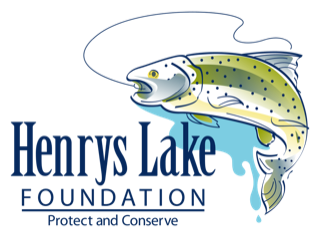
From Damon Keen – IDFG.
Although I’m not a water quality expert, here are a few observations about the bloom we saw this year.
1)Blue green algae are in fact not true algae at all. They are actually cyanobacteria that photosynthesize, produce oxygen and “feed” on the nutrients in the lake.
2)Blue green blooms can occur in many nutrient rich waters, namely waters high in phosphorous and nitrogen. Blooms can occur anytime, but are often seen in late summer and early fall.
3)As with other plant life, when the blue greens die, the decomposition process uses oxygen. Therefore, if conditions are right (or wrong), low oxygen conditions can occur as the bloom “dies” off. This is not common, but we probably saw a minor event like this at Henrys Lake around Labor day.
4)Henrys Lake is a nutrient rich body of water. Most of the phosphorous is delivered to the lake through runoff that occurs in the system naturally. Many other sources of nutrient delivery occur including: septic systems, lawn fertilizers, grazing practices (animal waste) and others.
5)Other factors can contribute to blue green blooms. Those factors include but are not limited to: High water temperatures, drought conditions, lack of flushing effect (although runoff contributes nutrients to the system, it can also dilute the nutrient load by the flushing effect), early ice out, long periods of sunshine, lack of precipitation and others.
6)Nutrient delivery can be reduced by ‘filtering” the water before it reaches the lake. Important filters or buffers around the lake include: Wetland areas, healthy riparian areas, and shoreline vegetation.
7)Blue green blooms can also be toxic, depending on the species present. Toxic blooms are not common and did not occur on Henrys Lake this year. When toxicity does occur, toxic impact to fish is usually not noted. When fish mortality is noted, it can be related to point
So What Can be Done? 1)Maintain/improve the shoreline buffers and riparian areas around the lake. In recent years, two important areas have been enhanced. The lower Duck creek/Kelly Springs area is no longer grazed and vegetation has been dramatically improved along a large area surrounding those two tributaries and a large shoreline area. Additionally, areas north and south of the county boat dock have been fenced and shoreline filtering improved there. However, maintaining/improving other shoreline buffers is important also. 2)Repair/upgrade and pump septic systems. 3)Monitor your own practices, especially if you’re close to the water body. Are you contributing nutrients to the lake by your unwise practices? Can you reduce personal impact?
